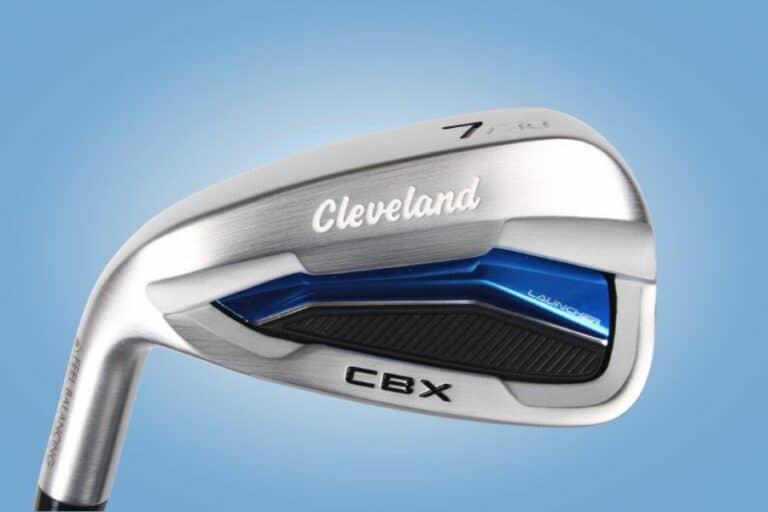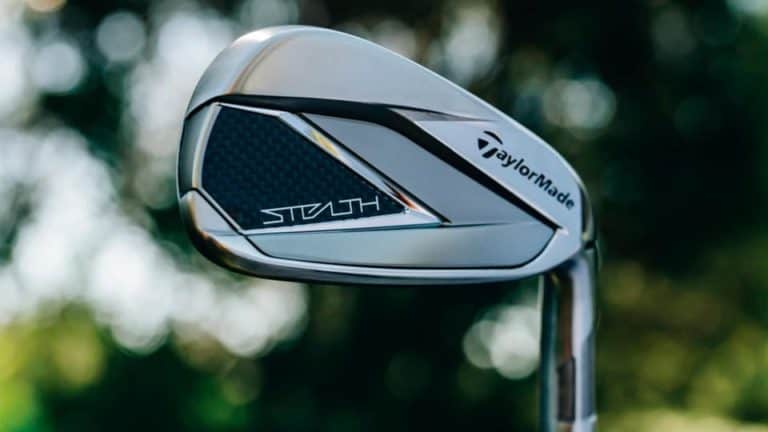What Club To Use For Chipping: Complete Analysis

Chipping is a short, controlled shot played with a lift-style action. Typically, it’s used when you’re close to the green and need to get the ball onto the putting surface quickly.
Understanding the mechanics of chipping is crucial because many factors come into play like distance to the hole, the lie of the ball, the landing area, and the type of shot you want to play. The right club can make all the difference in executing a desired shot and lowering your score.
I. What club to use for chipping?
When it comes to chipping, wedges are the ideal clubs as they help players produce a higher spin and better control.
Most golfers believe a 52-56 degrees wedge is the best fit to perform a basic chip shot. This is because a higher-lofted golf club is required for shorter distances.
To be specific, the best club used for chipping is the sand wedge. However, for an average golfer, a gap wedge and a pitching wedge work the best.
However, a few other clubs are used in different kinds of chip shots around the green.
II. Best clubs for hitting chip shots
Wedges often make the best clubs for chipping shots. However, irons and a hybrid can be used to help you get up and down.
Given below are the clubs used while chipping:
1. The sand wedge
A sand wedge is one of the best wedges for chipping. The ideal sand wedge loft ranges from 54 to 58 degrees for optimal performance.
However, most sand wedges have a 56- degree loft that allows the ball to land softly, has plenty of ball flight, and is quite versatile.
With the sand wedge, you can launch the ball into the air and have it land closer to your desired target – be that a flagstick or otherwise.
When hitting a sand wedge shot, expect the ball to travel a few feet away from the hole.
This club type is also perfect for players to get the golf balls out of the bunkers, rough, sand, and grass divots.
2. The pitching wedge
The pitching wedge is a lower lofted club than the sand wedge. It usually has a loft between 46 and 50 degrees.
It is mostly used for full-swing approach shots, which could be on the edge of the green or 10-20 yards off the green.
For pin-point accuracy on the green, the pitching wedge is your most dependable club when tackling small bumps.
Using any other chipping club with too much loft will result in sliding under the ball and having shots that end up short. Moreover, it is not only useful for a full-swing shot but also a run-type shot when close to the green.
However, expect the ball to roll a little further when it lands.
A chip shot is best achieved with a pitching wedge when sitting in the rough. For an everyday golfer, it gives the most consistent and reliable results.
3. The gap wedge
A gap wedge is one of the golf clubs with a loft between 50 and 54 degrees. It is called a gap wedge, as it is one club that fills the gap between the pitching wedge and the sand wedge.
Moreover, it is also known as the utility wedge or the approach wedge. Most golfers use this wedge to get out of the bunker further from the green.
However, it is most efficient when used within the green and for full shots.
An average golfer can produce their most consistent shots with this club when the ball is sitting down on the grass.
Lastly, the gap wedge’s loft is such that it can help pick the ball out of the grass while providing the most control.
4. The lob wedge
The lob wedge is typically lofted between 58-64 degrees. The low wedge is used when hitting on the greenside bunkers when the flagstick is not too far. Most experienced golfers use the lob wedge for chipping.
However, the lob wedge can often spin out of the rough because of its high loft and significant groves.
The lob wedge is useful for high and sharp chips around the green and has a short ball roll out and good control.
5. Irons (9-7)
Irons (9-7) are considered great for chipping as they perform similarly to a pitching wedge. However, with a 7-iron, the golf ball could be able to roll considerably.
It is advised to use a 7-iron if the approach is long and the pin is in the back. This will help make a smaller stroke and get the ball back to the pin.
Remember that this club is not the best if you have short-sided yourself.
6. Chipper
The chipper is a unique club, as it looks like a putter but with more loft. It is a short club that makes sculling or chunking a chip shot close to minimal. These golf clubs make chipping effortless.
To chip a golf ball with a chipper, swing it the same way you would with a putter.
7. Hybrid
Golfers prefer a hybrid golf club to a putter when hitting a long bump-and-run shot from the fringe.
A hybrid may sometimes work better than a wedge in terms of control when hitting from the fringe.
However, a hybrid is not the club for chipping out of the rough, as it doesn’t have enough loft to get a good roll to the green.
III. How to determine the right club for chipping
Here are some varying factors that need to be considered before choosing a golf club for a particular shot:
- The lie of the ball: The ball position impacts the lie angle. Thus, you need a lofted club if the ball is deep into the rough. However, when the ball is sitting on the fringe or the green approach, a hybrid or 7- iron is one of the best choices. It is best to go to the golf course and try out different types of lies.
- The amount of spin: If you struggle with spin when there isn’t a proper lie, it is recommended to use a lob wedge to help generate more spin. Moreover, choosing a ball with a greater greenside spin will also work in your favor.
- The distance from the green: A lob or a sand wedge works best when you have to chip short distances from the green. Higher lofted clubs provide fast swing with ample spin. Moreover, a 7-iron might help you consistently chip to cover the 10-15 yards on the green.
- The impact of green speed: Remember to keep the green speed in mind, as if you are on a fast green, it might not hold bump-and-run shots very well. A higher lofted club is suitable for a fast green speed.
- The type of shot you need to play: If you need to tackle your ball out of ditches, trees, and hazards, a sand or a lob wedge is the most suitable.
IV. Steps to improve golf chipping
Boosting your golf skills can be as simple as refining your chip shots. While they’re challenging to perfect, they’re invaluable for getting your ball to the green from a close range.
Let’s explore key tips to enhance your chipping game.
Stance: When preparing to hit the ball, position your feet parallel to the target line. Keep them square and spaced between 0 to 6 inches apart for stability.
Position of the ball: Aim to position the golf ball in the middle of your stance. While you can adjust it slightly back for a sharper hit or forward for more height, the standard placement is in the center. This ensures better balance and control over your chip shots.
Grip: When chipping, avoid gripping your wedge too tightly. Instead, hold it softly. Place your bottom hand at the bottom of the grip and use your thumb to push down the shaft for power. This gentle grip allows for better control and accuracy in your chip shots.
Ball striking: While striking the ball, your thumb provides the power for chip shots. These shots involve swinging your shoulders, with no movement in the wrists or hands. All the action is in your shoulder movement, so focus on that for better results.
Understand the characteristics of different clubs: Each club has its own set of characteristics that make it suitable for different types of chip shots. Knowing these characteristics will help you choose the right club for the shot.
Practice with different clubs: Experimentation is key to learning which club works best for different situations. Make sure to practice with all your clubs, including wedges and irons, to become comfortable with their individual characteristics.
V. Factors Influencing Club Choice for Chipping
Let’s have a look on the Factors Influencing Club Choice for Chipping:
Distance Control
When chipping, remember that each club will naturally give you a different distance. Take into account the distance to the hole and pick a club that you know will give you a predictable roll-out. This way, you can plan for a successful shot more effectively.
Lie of the Ball
Is the ball on bare turf, thick rough, or a slope? These conditions affect how the ball will react off the club and roll out. Choosing a club that minimizes the impact of the lie can ensure a more predictable shot.
Obstacles and Hazards
If there are bunkers or obstacles between you and the hole, you can choose a club with more loft to easily clear them and land the ball softly on the green.
VI. Tips and drills for chipping
The hula hoop chipping drill
A fun and effective drill for improving chipping accuracy is the hula hoop chipping drill. Place a hula hoop on the ground, about 10 feet away from where you are standing. Take turns trying to chip balls into the hoop, with the goal of getting as many in as possible.
This drill helps improve your distance control and aim, while also adding an element of competition and fun to your practice session.
Chip-a-coin chipping drill
Another great drill for chipping accuracy is the chip-a-coin drill. Place a coin on the green, about 10 feet away from where you are standing.
Take turns trying to chip balls as close to the coin as possible, without hitting it. It helps improve your aim and precision, while also providing a specific target to aim for.
Turn the putting green into a par 2 course
Practice chipping around the green, aiming for a two-shot putt on each hole, treating it as Par 2. Keep score for 9 holes and aim to improve. This drill sharpens chipping and putting skills.
Extend the shaft
Avoid relying too heavily on your wrists, it can impact accuracy. Instead, use your shoulders for better control. Grip the club normally, then place an alignment stick along your arm, extending past the club.
Hit chip shots with the stick against your arm to keep your wrist stable. Afterward, repeat the motion without the stick, aiming for the same control.
Draw a line in the sand
Head to a bunker on the practice green, lay down five balls, and draw a line an inch behind each in the sand. With an open-faced wedge, aim to hit the drawn line. The objective is to strike the sand just below the ball.
if executed properly, the ball will pop onto the green without being directly struck. Feeling contact with the ball indicates insufficient sand contact.
VII. The rule of 12 In golf chipping
The rule of 12 is a helpful technique for improving your distance control when chipping. It involves using different clubs to hit chips and noting how far each one travels with a short, medium, and long swing.
For example, if you use an 8-iron and it goes 4 yards on a short swing, 8 yards on a medium swing, and 12 yards on a long swing, you can use this information to estimate the distance your chip shots will travel.
This technique can help you become more consistent in choosing the right club for different distances and improve your overall chipping game.
Conclusion
Improving your chipping skills takes time and practice. By understanding the characteristics of different clubs, experimenting with various techniques and drills, and utilizing helpful techniques such as the rule of 12, you can elevate your chipping game and see lower scores on the scorecard.
FAQ’s
1. What are the most common mistakes to avoid in golf chipping?
The most common mistakes to avoid include using the wrong club for the lie, overcomplicating breaks, and neglecting practice with different clubs.
2. How can I improve my chipping skills?
To improve your chipping skills, try practicing with different clubs, experimenting with different techniques and drills, and utilizing helpful techniques such as the rule of 12.








